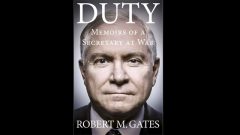What is Our War?
The PRISM/NSA program of collecting call records of millions upon millions of Americans will surely dominate our national political conversation for the foreseeable future. The issue obviously touches privacy concerns we all have while hitting other uncomfortable spots. Release of the PRISM program obviously builds on the anxiety of the current scandals that have come to light in the Benghazi, IRS, AP and James Rosen surveillance fiascos, among others. Americans, it seems, are on a rendezvous with destiny of losing faith in the federal government as a whole because of the failures of its current leadership class found at the top of the administrative, diplomatic, and security departments and agencies. It can’t happen soon enough.
Going beyond the NSA surveillance dragnet, which seems to belie the very notion of a warrant and its function of accessing narrow, specific, targeted information, we might ask why we are still fighting a surveillance war that diminishes our liberties, over a decade after 9/11. We’ve been fighting in Afghanistan and Iraq since 2002 and 2003, respectively. But have we attempted to achieve the basic aim of statecraft since 2001, i.e., victory and peace? Or have we, are we, doing something else of which the NSA surveillance program is a part, that is, diminishing ourselves to find a certain protection from Islamic terror, if not other enemies that are undefined but always lurking?
An older essay from Angelo Codevilla, “Why We Don’t Win” (link no longer available) reminds that statecraft finds its true measure in effecting peace. In America, this means ensuring that our experiment in constitutional republican government moves forward without threats from abroad impeding that project. However, Codevilla asserts, our problem is that we have a leadership class that does not take seriously the need to restore peace. Instead, our leadership
promoted the notion that 9/11 would “change everything, forever”—in America. They accepted terrorism as a fact of modern life and told Americans to get used to finding public spaces turned into fortresses, to showing documents and being frisked. The slogan “united we stand” did not tell Americans to eliminate our enemies, but to stand still, to commemorate our dead, to believe and obey Washington. There would be no victory, much less peace. Demands for either would be deemed extremism. The terror threat would remain “orange” indefinitely, and the bloodletting would have no end. It’s a wonder that Americans’ spirits held up as long as they did.
But what would victory look like, what would it entail? Codevilla notes that “Our ruling class’s persistent denial of the fact that war arbitrates human differences, and its belief that “victory” is a dangerous relic from a less enlightened age, explain why terrorists have confounded it so easily.” It seems obvious that victory did not and does not include the imposition of a modern nation state design on subject populations. But that is precisely what we chose.
The failure Codevilla documents is refusing to make ends/means calculations in the need to restore peace. So, he argues, we missed something amidst the endless prosecution of stability in Iraq and Afghanistan. America took to arms, but did so ineffectually. We avoided thinking about whom to kill, up and down the chain, including numerous other power centers that were never strangled. Indeed, some of these we still give tacit support to. Instead, our leadership has relied on models, alternating paradigms of the internationalist, neoconservative, and realist varieties and their depictions of what stability should look like. But the aim of war is victory, dominance, and the dictation of terms to a vanquished enemy. If the strategy you pursue does not even let you define victory, coherently pursue it, then, its sheer ambiguity guarantees its failure over and over again.
Codevilla argues that instead we invested in a massive domestic security apparatus, tried to implant democracy as an exemplary form in the Middle East, and left unchallenged the numerous fertile sources of Islamic terror. We believed, we mirror-imaged the notion that populations of Middle Eastern states would identify with American values as these were displayed in Iraq and Afghanistan. As Codevilla notes, the Shia and Sunni in Iraq always “knew their war.” Did America?
Where does this leave us? Codevilla observes that one sure fact is that we are left with a “burgeoning security apparatus” and its belief
that any person is neither more nor less likely to be a terrorist than any other, and that focusing on Muslims (especially of a certain age, etc.) is some kind of crime. That logic mandates bothersome but impotent surveillance of the general population. Whenever terrorist incidents spotlight that impotence, this logic prescribes ever-greater doses of the same. On Christmas Day 2009, a young Nigerian whose prominent father had warned the U.S. embassy of his son’s Muslim anti-Americanism almost blew up an airliner over Detroit with a bag of high-explosive powder attached to his underwear—having been let on board without even showing his passport. Republicans and Democrats rushed to enhance security by forcing all air travelers through scanners that would show us naked (with faces obscured) to security officers. (Inevitably, these officers’ cubicles will be tagged “Peeping Toms’ Cabins.”) What can be said of a ruling class that pursues security through universal nakedness?
These truths are hard to deny. What it means for America’s political future can either be played out as it currently is, or failures, over and over, might lead to that most difficult of tasks in a democracy, replacing not merely parties, but the selection, promotion, and practice of those in power.

